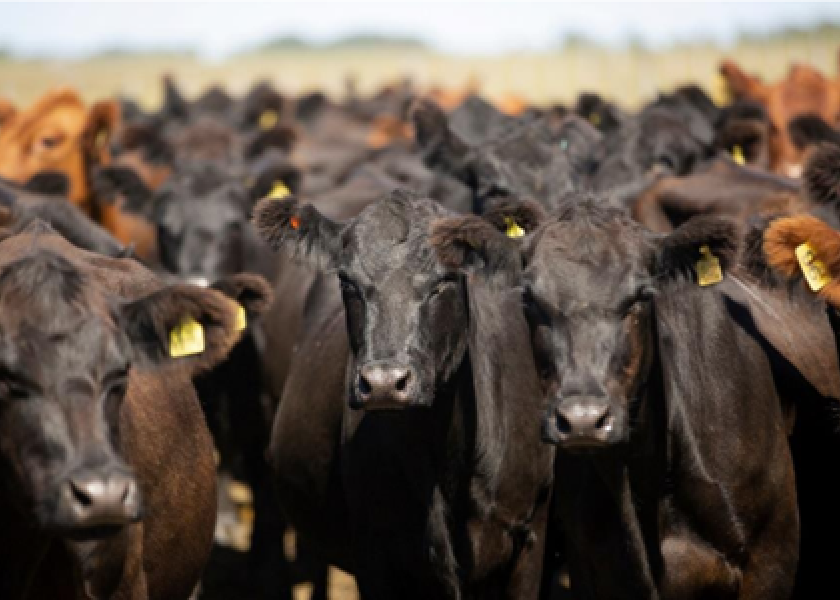Learn how crossbred cattle can enhance dairy farm efficiency and combat climate change. Can this new method revolutionize your farm? Keep reading to explore the possibilities.
Summary: Dairy farmers face the dual challenge of managing greenhouse gas emissions while maintaining sustainability. By integrating dairy-beef crossbreeding, dairy farms can achieve a lower carbon footprint and enhance economic viability. This practice allows emissions to be spread over both milk and meat production, creating a more efficient and sustainable system. Proper animal welfare and efficient management are key to reducing resource usage and methane emissions per unit of beef. Additionally, dairy-beef systems improve meat quality and productivity, providing a holistic solution to meet nutritional needs and maintain farm profitability. Economic advantages include shorter market time, cheaper feed costs, and better sales prices, enhancing profitability for dairy producers. Strategic crossbreeding and early life management ensure efficient milk production and high-quality meat, promoting sustainable agriculture.
- Dairy-beef crossbreeding can significantly reduce the carbon footprint on dairy farms.
- This practice enhances both milk and meat production, leading to a more efficient system.
- Effective animal welfare and management are essential to minimizing resource usage and methane emissions.
- Dairy-beef systems offer improved meat quality and productivity.
- Economic benefits include shorter market times, reduced feed costs, and better sales prices.
- Strategic crossbreeding and early life management contribute to efficient milk production and high-quality meat.
- Adopting dairy-beef crossbreeding promotes sustainable agriculture and farm profitability.

Climate change is no longer a distant danger; it is a reality that now affects agriculture, particularly dairy production. Rising temperatures, uncertain weather patterns, and rising greenhouse gas emissions are all issues that dairy producers cannot afford to ignore. In the face of this severe climate catastrophe, dairy-beef crossbred cattle seem to be a potential option, providing increased output and improving environmental sustainability. Integrating dairy and beef systems via crossbreeding has the potential to reduce our carbon footprint while increasing farm profitability. This dual-benefit method meets the immediate demand for sustainable practices while ensuring dairy farms’ long-term survival. Please continue reading to learn how dairy-beef crossbred cattle may transform your business and positively impact the environment.
The Climate Challenge for Dairy Farmers: Balancing Emissions and Sustainability
The climate crisis is at the forefront of dairy producers’ concerns today. Farmers are pressured to cut greenhouse gas emissions from their herds as the planet heats. Cows create methane, a potent greenhouse gas, during digestion, contributing to climate change. This is a critical problem since lowering emissions may assist in decreasing our planet’s warming. Dairy producers strive to make their businesses more sustainable to provide a better environment for future generations.
Unlocking the Potential of Dairy-Beef Crossbred Cattle
Dairy-beef crossbred cattle, often known as beef on dairy, are the outcome of combining dairy cows with beef bulls. This approach mixes dairy and beef cattle features to generate animals that thrive in milk and meat production. Unlike conventional dairy cows, developed for maximum milk output, or beef cattle, chosen for their meat quality, crossbred cattle combine the best of both worlds. Dairy-beef crossbreds may help to make the cattle business more sustainable by producing milk more efficiently while still providing high-quality meat.
A Dual-Purpose Solution for a Greener Future
Dairy-beef crossbred cattle provide a viable way to reduce the cattle industry’s carbon impact. Dairy cows serve a dual function via crossbreeding: they provide milk while producing calves for the meat industry. This dual-purpose utilization implies that enteric methane emissions are spread among milk and meat commodities. As a consequence, the entire carbon impact might be reduced. The efficiency attained from this strategy implies that fewer resources are used per unit of food produced, resulting in a more sustainable production system.
Enhancing Economic Viability with Dairy-Beef Crossbreds
Dairy-beef crossbred cattle may assist dairy producers in increasing their economic viability in various ways. First, these crossbred animals often have higher gain efficiency, which means they develop quicker and use less feed to attain market weight than standard Holstein cattle. This lowers feed costs and enables farmers to sell their livestock sooner, increasing profit margins.
Furthermore, dairy-beef crossbreds have higher meat quality. This may result in higher prices per pound when cattle are sold, increasing farmers’ revenue. These crossbred cattle improve efficiency and profitability by combining the qualities of dairy and meat genetics.
Overall, the economic advantages are clear: shorter time to market, cheaper feed costs, and better sales prices all lead to enhanced profitability for dairy producers that use dairy-beef crossbreeding.
Animal Welfare: The Backbone of Sustainability in Dairy-Beef Crossbreeding
The well-being of cattle in dairy-beef crossbreeding systems is more than ethical farming; it is also an essential component of environmental sustainability. When dairy and beef cattle are adequately cared for and managed throughout their lives, they tend to be healthier and more productive. Healthier animals are less likely to succumb to illness, resulting in fewer losses and more efficient use of resources.
Improved animal welfare methods, such as frequent health screenings, appropriate diet, and adequate housing circumstances, directly lead to lower methane emissions. Healthy cattle develop faster and more effectively, gaining market weight sooner and reducing farm time. This shortened lifetime leads to decreased methane production per animal. Furthermore, producers may improve cattle development and health by assuring early life management and continual monitoring, spreading the environmental effect across longer productive years.
Furthermore, well-cared-for animals tend to have more excellent feed efficiency rates, so they turn into body mass more efficiently. This not only benefits farmers monetarily but also helps to reduce their environmental impact. In summary, excellent animal welfare methods are consistent with sustainable agricultural aims, demonstrating that caring for animals also cares about the environment.
Integrating Strategic Crossbreeding for Enhanced Farm Performance
Crossbreeding procedures in dairy farming entail combining specialized breeding strategies to produce dairy-beef crossbreds. For example, farmers might begin by choosing acceptable breeds for crossbreeding. Breeds like Jersey and Holstein are often crossed with beef breeds such as SimAngus or Brahman to create calves with favorable characteristics.
Successful case studies demonstrate the practical advantages of these strategies. In Wisconsin, a dairy farm started a crossbreeding experiment using Holstein and SimAngus. The findings were significant: they discovered improved meat quality and better gain efficiency in their cattle, resulting in more income and a lower carbon impact.
Another intriguing case is from a farm in California. By crossbreeding Jersey cows with Brahman bulls, the farm improved disease resistance and heat tolerance while reporting significant decreases in methane emissions per unit of meat produced. The crossbred cattle on this farm had higher growth rates and more excellent general health, which increased economic viability and environmental sustainability.
These examples demonstrate how dairy producers may improve their businesses via careful selection and crossbreeding procedures, balancing economic efficiency and environmental responsibility.
Overcoming Initial Hurdles in Crossbreeding for Long-Term Gains
When contemplating crossbreeding, dairy producers might face large upfront expenditures. Acquiring high-quality genetic material may be expensive, not to mention the costs associated with modern breeding technology and veterinary care. However, the expense may be offset over time by the possibility of increased profitability from increasing meat and milk outputs. Farmers may also get financial assistance via awards focused on sustainable agriculture techniques.
Another difficulty is the competence necessary for successful crossbreeding. This specialist expertise extends beyond fundamental animal husbandry, including genetic selection, reproductive technology, and dietary management. Partnering with agricultural extensions, attending seminars, and using veterinary specialists’ experience may help close this knowledge gap. These materials provide farmers with the required expertise to realize the advantages of crossbreeding projects.
The introduction of hybrid cattle causes a change in management approaches. These animals often need individualized feeding regimens, health monitoring, and breeding schedules. Structured management systems may help simplify these procedures. Using data-driven solutions, such as herd management software, may simplify record-keeping and decision-making while ensuring each animal gets the care it needs to flourish.
Embracing these ideas may help farmers overcome the obstacles of crossbreeding, opening the path for increased production and sustainability in the dairy sector. By investing in better genetics, broadening their knowledge, and improving management techniques, dairy farmers may make more informed choices that benefit both their businesses and the environment.
The Bottom Line
Dairy-beef crossbreeding is a viable solution to current dairy farming issues. It allows producers to reduce greenhouse gas emissions while increasing economic benefits. Crossbred cattle may help producers establish a more sustainable and efficient production system, improve animal welfare, and produce higher-quality meat. This technique distributes methane emissions among dairy and beef commodities, demonstrating environmental efficiency and emphasizing economic benefits via increased gain efficiency. Accepting dairy-beef crossbreeding may spur innovation and bring the sector a more prosperous future.
 Download “The Ultimate Dairy Breeders Guide to Beef on Dairy Integration” Now!
Download “The Ultimate Dairy Breeders Guide to Beef on Dairy Integration” Now!
Are you eager to discover the benefits of integrating beef genetics into your dairy herd? “The Ultimate Dairy Breeders Guide to Beef on Dairy Integration” is your key to enhancing productivity and profitability. This guide is explicitly designed for progressive dairy breeders, from choosing the best beef breeds for dairy integration to advanced genetic selection tips. Get practical management practices to elevate your breeding program. Understand the use of proven beef sires, from selection to offspring performance. Gain actionable insights through expert advice and real-world case studies. Learn about marketing, financial planning, and market assessment to maximize profitability. Dive into the world of beef-on-dairy integration. Leverage the latest genetic tools and technologies to enhance your livestock quality. By the end of this guide, you’ll make informed decisions, boost farm efficiency, and effectively diversify your business. Embark on this journey with us and unlock the full potential of your dairy herd with beef-on-dairy integration. Get Started!















